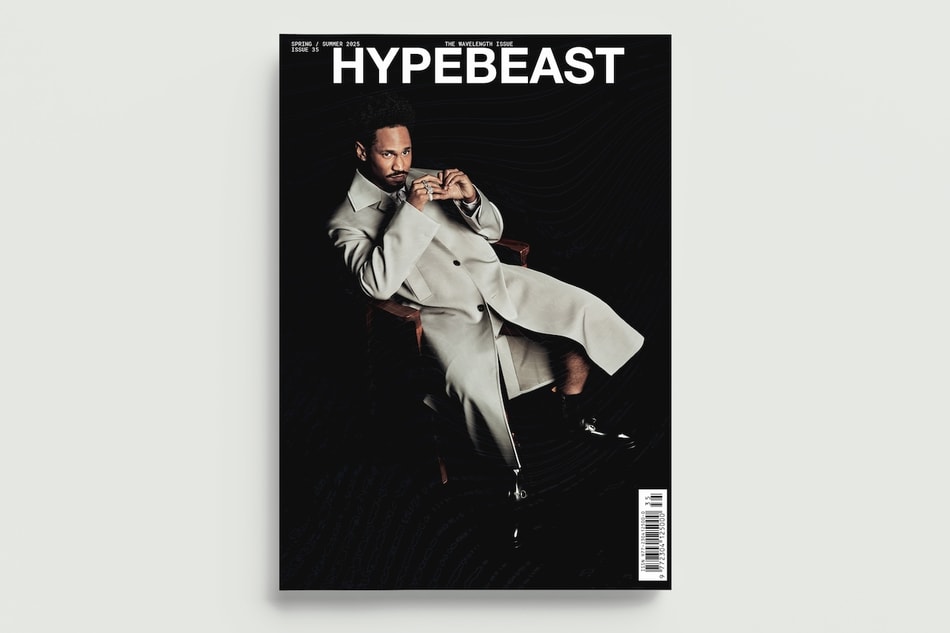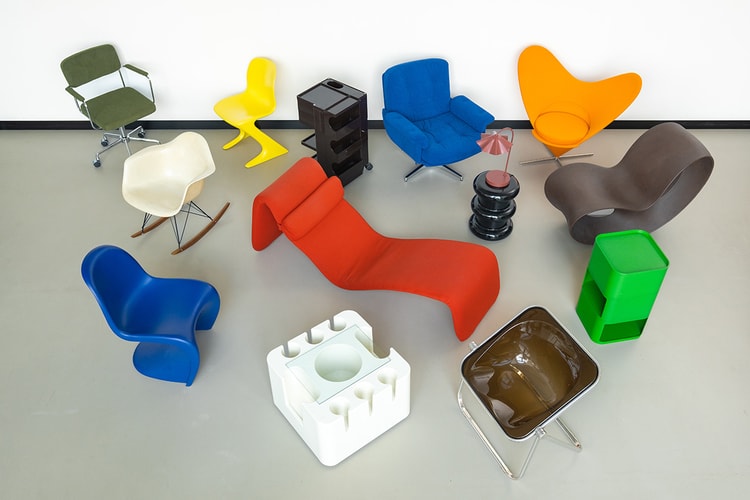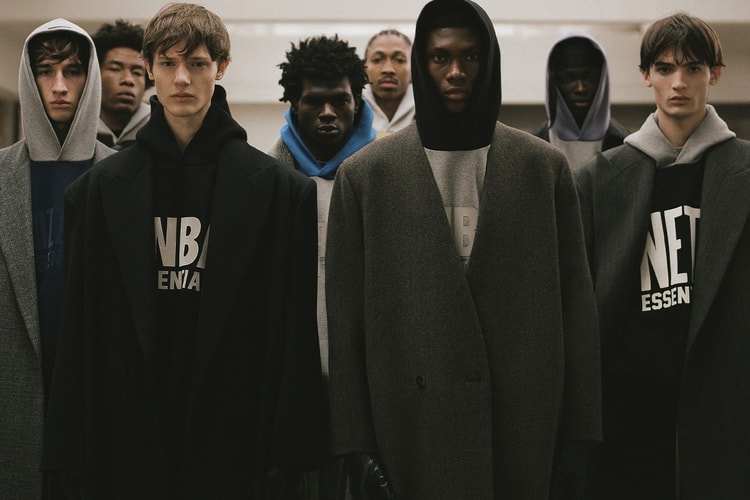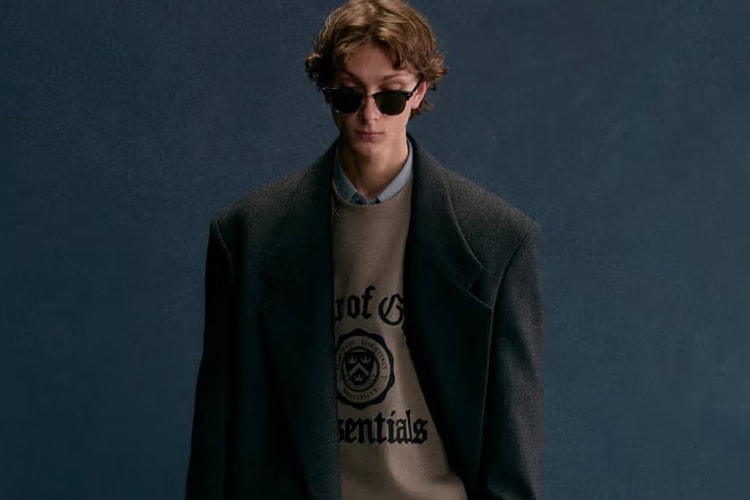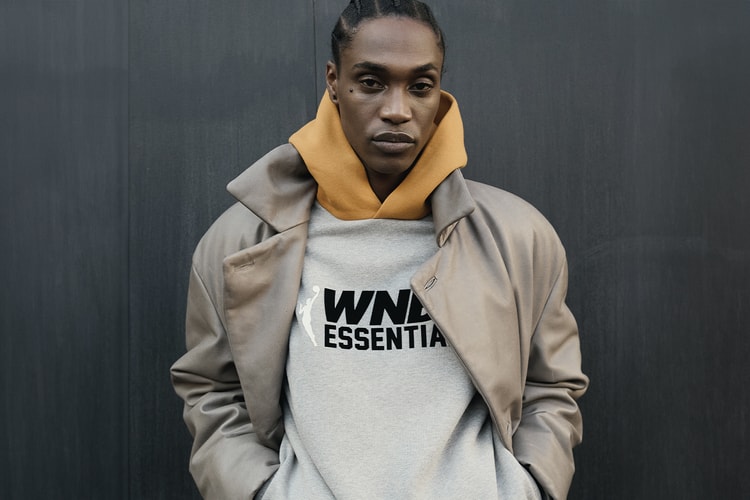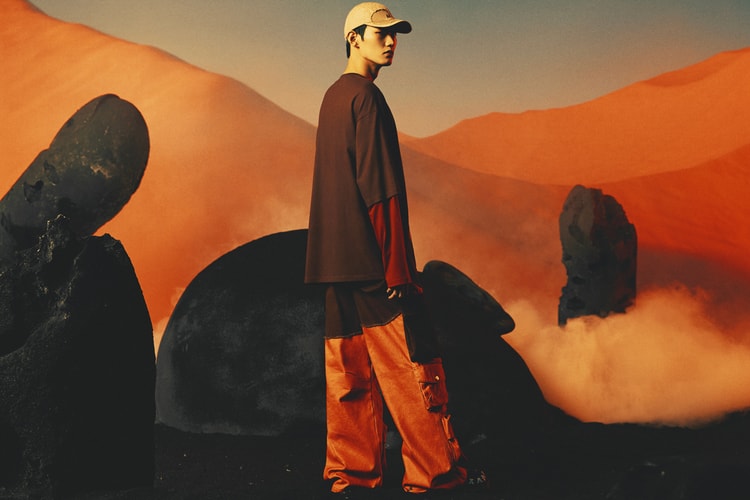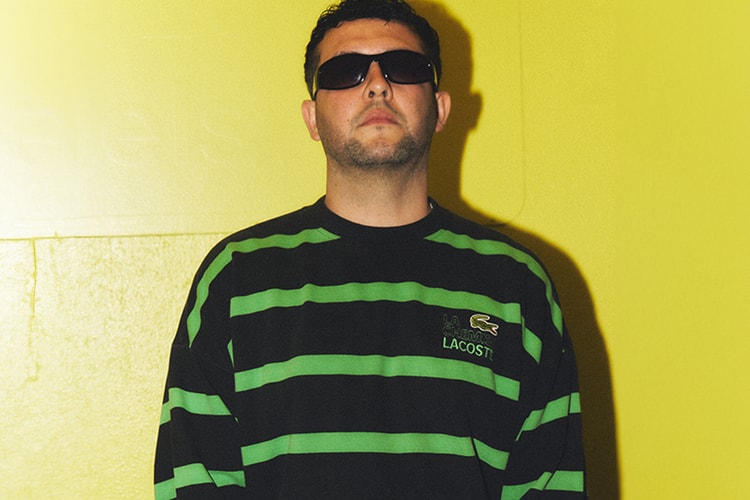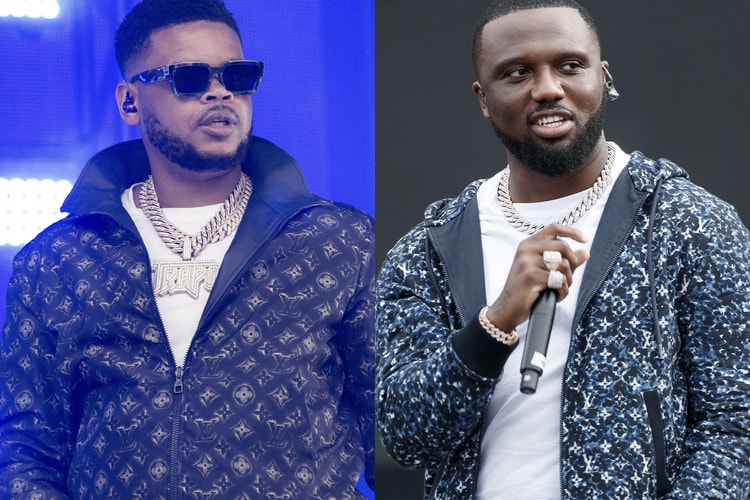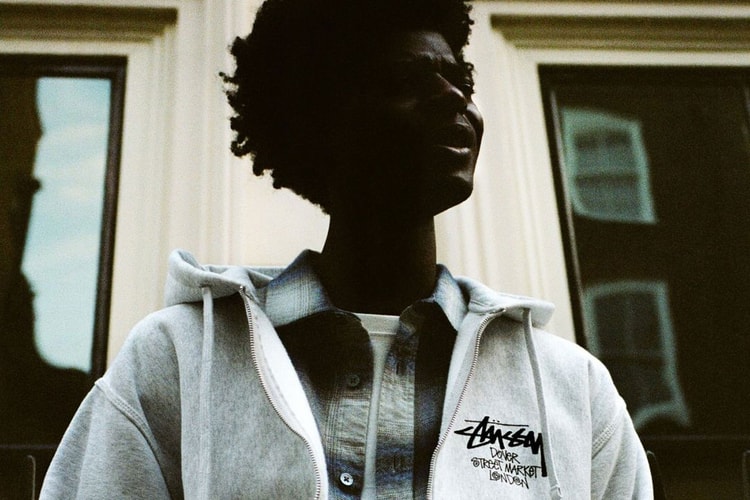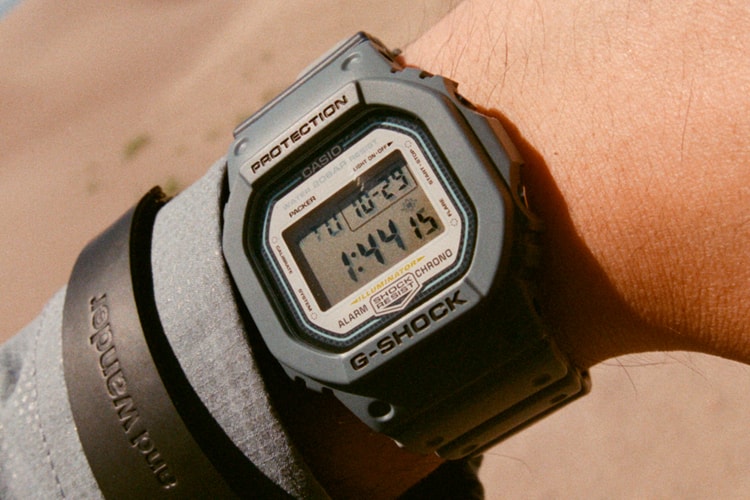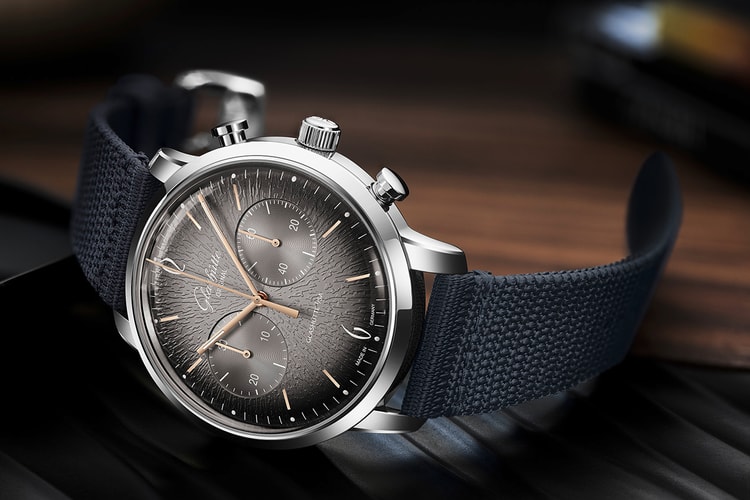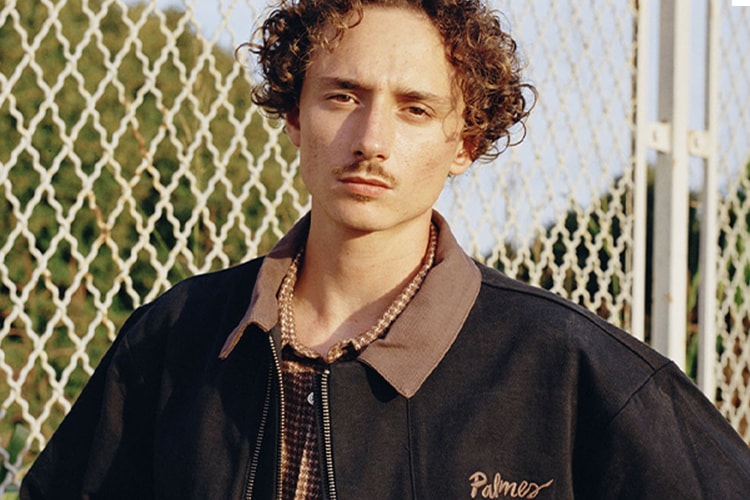Essentials: Gauthier Borsarello
Hypebeast visits the studio of Fursac’s creative director to break down some of his most prized vintage pieces.
Turning a passion into a career doesn’t come overnight, just ask Gauthier Borsarello. It took years of building, studying, and truly understanding his craft that eventually led to his appointment as creative director of the Parisian fashion label, Fursac. In this installment of Essentials, Hypebeast visits the brand’s flagship in central Paris to catch up with Borsarello and explore his vast vintage collection as well as discuss French history and his inspirations.
Entering Fursac’s HQ, Borsarello greeted us in his office on the second floor before sitting between two wooden speakers that he had handmade with his brother. Whilst discussing his journey, it became evident that fashion, in particular durable and functional wear, has always played a pivotal role in his life. His grandfather Jean-François Borsarello, was an army doctor-turned-writer who released some of the most referenced books on military fatigue. “He authored all the biggest Bibles. He was the king of camouflage and even helped the likes of Maharishi,” he explains.
As one of six children raised in the suburbs of Paris, Borsarello’s humble upbringing meant hand-me-downs were commonplace, and “definitely no brands” featured in his wardrobe. These experiences during his formative years are what shaped his interest in acquiring good quality garments, gradually building an affinity for all things vintage, remembering, “I was going to the flea markets with my dad and that’s how I started on vintage. Military wear is very solid, has a good style, and it’s affordable.”
Design, fashion, or even collecting wasn’t always the intended route for Borsarello, however. A classically trained musician, he was a professional double bass player part of the Orchestre de Paris, one of the country’s leading symphony orchestras. Despite years of experience, it was in his early 20s when he decided that music wasn’t for him. “I realized I didn’t want to be a musician. It is very repetitive with little professional evolution possible,” he says.
“Fursac is a new money brand. Usually, it’s an insult to be called that but I love it. It means you did it on your own.”
With a clear idea of what he wanted to do, Borsarello started his career from scratch and began his fashion journey as a sales assistant at Ralph Lauren’s flagship store before becoming a vintage specialist for its sub-label RRL. Aware of his relatively junior role, he used his time wisely to network with patrons and make connections with a range of figures from renowned photographers to stylists. His passion for sourcing and collecting vintage pieces continued to run in tandem with his professional life, and he soon launched his own showroom, renting some of his most unique pieces to several high-profile luxury labels.
It was when meeting artistic director Franck Durand who, at the time, was in motion to launch his brand Holiday, that Borsarello identified a new trajectory for his career – design. “He said that he liked my vintage curation, and he wanted his brand to look like it,” he remembers. Despite not being a designer himself, this is where he realized he was able to utilize his knowledge of vintage to create standalone collections. “I was really modest about it because I’m not a designer,” he says. “I just know how things are going to age when they’re made a certain way. This is when I started to consult for different brands.”
He initially started consulting at Fursac in 2020, and the following year took over as creative director. The brand itself is inherently French. Prior to Borsarello, it had never crossed the border and never went into wholesale, but boasts an air of reverence throughout the country as the brand for luxury. “Here, it’s J.M. Weston, Rolex and Fursac,” he explains. “These are the aspirations of any guy. When he makes money, his suits are going to be from Fursac. We touched all strands of society and the desirability is still there.” This national admiration motivated Borsarello to take his extensive research on the brand’s rich history to the global stage, aiming to put Fursac, and French fashion, on the map. This year, the label celebrates its 50th anniversary, and his mission is, and always has been, to “make France cool.”
“The ultimate form of distinction in clothing is vintage because it’s unique, it’s old, you have to dig for it. You have a special relationship with the garment.”
“There’s a lot to say about French tailoring and style. There’s no brand like it here,” Borsarello says. When he was appointed, he took time to study the brand, French fashion as well as understand others’ perspectives on French culture. “I asked a cartoonist in New York and he said, ‘greasy hair, black shoes, and cigarettes’ [laughs], and that opened my eyes. People only think about the lifestyle,” he explains.
However, there’s a history attached to why France hadn’t been propelled to the forefront of the fashion world. Following centuries of autocracy, the population was accustomed to relying on the monarch for style inspiration. “If the king’s in purple, everyone wears purple,” he says. After the French Revolution, it was seen as loyalty to the ruling class if people dressed in a fashionable way, so “you would just dress for your role in society. There was no fun in it.” It wasn’t until the 1960s when the British and Americans brought “coolness” through “rock ‘n’ roll” to popular culture that the country began to establish its style identity. “I was studying the era from the ‘60s to ‘80s when the blend of traditional suits and beetle boots were a thing,” he explains. “To me, [Fursac] is a new money brand. It’s super clean. Usually, it’s an insult to be called that but I love it. It means you did it on your own.”
From Texas to Tokyo, Borsarello has vintage dealers around the world and admits that on average he “buys at least one item per day” — amassing an incredible collection that inspires his own designs. Whatever the piece may be and wherever it might be sourced from, for him, “there are only two types of products: good and bad,” and good craftsmanship has the ability to transcend eras and never adhere to the trend cycle. Whilst trying and testing the products himself to see what will work from a Fursac lens, he also analyzes composition, fits, textures, and how they’re crafted, applying those learnings to the creation of his garments. “What I love to do is study vintage pieces and understand why it was made better then, and how I can make a garment like this today,” he explains.
Construction, volume, durability, and silhouette are all elements that make a timeless product. Nevertheless, as well as charm, a vintage piece also possesses a story, and having an appreciation for what came before whilst channeling its rich character is what Borsarello hopes to relay to contemporary consumers. A key part of his carefully curated collection, and one of the main reasons he’s drawn to the vintage market, is having a piece that’s unique which separates it from the world of fashion. “The ultimate form of distinction in clothing is vintage because it’s unique, it’s old, you have to dig for it. You have a special relationship with the garment and that’s the exact opposite of fast fashion,” he says.
“Everything I do comes from a vintage inspiration but it’s made new [...] I like to call it the ‘vintage of tomorrow,’ because I want it to age well.”
Always looking to “go to the roots” of a design to ensure he doesn’t repurpose another creative’s interpretation of it. The intricate attention to detail sees the creative director take it upon himself to research references and he fosters the same rigorous mindset in his team — making his collections like no other. “Everything I do comes from a vintage inspiration but it’s made new with modern fabrics and construction,” he says. “I like to call it the ‘vintage of tomorrow,’ because I want it to age well. In 20 years, I hope people will look back and say ‘This is Fursac from Gauthier from the 2020s.’”
Hypebeast: As this is an Essentials, what is one item you cannot leave the house without?
Borsarello: One thing I cannot go out without is a watch. Growing up we couldn’t afford luxuries like this so for me, it’s the object that symbolizes the fact I changed my life. I’ve got around 20 good watches, one for every occasion.
Your watch collection is extensive with some beautiful pieces. Tell us about the three you’ve chosen.
The Yema Yachtinggraf is a very good French timepiece and really underrated in my opinion. It’s a piece I love. It’s inspiring because it was worn by one of the major French sailors in the ‘60s and ‘70s who broke many records. I had found it at a flea market whilst digging through a box of vintage pieces and I knew I needed to have it. I didn’t have much cash at the time, but a friend of mine bought it for me and told me to just pay for the repairs, so there’s emotion in this one.
I chose Patek Philippe because, to me, it’s the ultimate brand. I came from a low-income household and I had two friends who were rich so I always thought I needed to maintain a big complex around them. One time, we were on a bus and I tried to be smart and say, “When I’m rich, I’m going to have a Rolex and J.M. Weston.” They laughed and said that they wanted John Lobb and a Patek Philippe. I had no idea what they were talking about or even how to spell it [laughs]. So when I made a bit of money I knew I’d get a Patek, and the Ellipse is the most beautiful watch ever in terms of shape, it’s perfection. I love this one because it’s smart. It’s not shiny, it doesn’t have the sunburst dial – this is my fancy watch.
The vintage Coral Rolex Oyster Perpetual is a perfect timepiece. There’s no date, it’s 36mm so it’s really easy to wear and the Coral is a super rare dial so I’m really lucky to have it. It also looks like a toy, so I can take the metro with it, if you don’t know the watch market, you’d think it’s a Swatch, you know? It doesn’t scream money. With these three watches, I can talk to the vintage world, the elegant world, and the very sporty world. With these, I can live forever [laughs].
In every thrift store, Levi’s is always a commonly stocked brand. What is your relationship with denim and what is the Big E 501?
American culture has been ingrained around the world, and it was after World War II that they saw this as their fight against the Eastern Bloc. The chewing gum, white T-shirt, rolled sleeve with a Lucky Strike box, and a pair of 501s — it was the epitome of cool. I collect denim, and I’m always searching my collection for volumes. The 501 is the best in the world, the proportion, the volume, and the quality, everything about it is perfect. It’s widely available because a lot of people bought it, wore it, loved it, and repaired it, and it’s something that ages really well. However, models from the ’30s and ‘40s aren’t easy to wear. The perfect era is between 1955 and ’65, and I chose the Big E which was released before ’72 when they changed the tag to the round E. It has hidden rivets and it’s the right fit for me.
Loafers are your go-to footwear choice. How has it been for you to see the evolution of sneakerheads to adopting this?
I think the sneaker market disappointed a lot of people who are interested in product because they don’t age well. Being a fan of vintage, you always want something that gets better with time. And sneakers are built for function, not to last. When you think about what you want to put on your feet, loafers are the best answer. They’re comfortable, they’re a leisure shoe and easy to mix with different styles. It’s not too fancy and I think it’s the perfect bridge between the comfort of sneakers and the very classic aesthetic. All mine are Alden Cordovan’s and I have about four or five in rotation that I wear all summer.
One of the most interesting pieces in your collection is the Vercingetorix medal. What is it and how did you acquire it?
Vercingetorix was a Gallic king and was a very important person in France. He fought against Caesar and the Romans in many battles and when we became a republic, politicians tried to bring the people together, using this story as a message of unity.
I got this particular medal from an antique jewelry dealer who I know well. It’s dated from 1900, super thick gold, and the crown has diamonds all around it — it looked too good to miss out on. I sold one of my watches to even get the money to buy it [laughs]. It’s very old, in perfect condition and it’s so French — it’s cheesy, old, and everything I like. It’s part of history.
You’ve also got a few other essentials from the early 1900s, how did you come across these and where did they come from?
The thing is, I love it when things are super old and super modern at the same time. I would always go as far back as possible and try to keep it cool. But, the big question is always fabric. It’s very difficult to find something from the ‘30s in linen or cotton that still looks good today so it excites me when I do find it. Going back to my point on distinction, I’m not going to see a 1930s coal bag in the street today, it’s not going to happen. I want to show that you can still dig up something very old and it’ll still look good. To me, there are only two types of products: good and bad. I can go to a shop and buy something new and love it, and also go to the flea market and get something from the 19th century and love it too — that’s where your personality comes out.
You’re also an avid collector of Native American pieces. What is the story behind the belt?
This is handmade from bone by the Zuni community. One of my friends’ father opened a Native American jewelry store called Harpo in 1971, and it has one of the biggest stocks in the world which is weird because we’re in Paris. She does wholesale everywhere, pretty much anyone who’s selling Native jewelry gets it from her. Harpo stocks everything from small pieces to the rarest, and all the jewelry is made by Native communities — it’s not just a European guy ripping off their designs. This belt is sterling silver and every product in the store is polished and has life to it through the patterns, finishes, and materials used. The artistry has been passed down for generations and it’ll continue. There’s even a family that’s in the third generation working with Harpo. The relationship runs deep.
Talk us through Fursac’s latest collection and the inspiration behind the pieces.
For every collection I create, I look at Paris and find another part of France as inspiration. We’re lucky to have a place for everything — one of the best surf spots in the world, we have Brittany for the Celtic vibe, we have the Alps — one territory with a lot of different cultures.
I took Brittany for the most recent one which is like the Montauk of France. I’ve always imagined a new money guy who becomes rich and wants it all. I tried to understand what he would do if he went on holiday — it’d be sailing in a new mint outfit. So this collection is designed around that guy. There’s technical sailing wear, bright hues with nautical flags and iconography. The tailoring is super sharp so you can still wear it to work. And voilà, that’s the two inspirations when designing this collection.
For more information and to shop Fursac’s latest collection, visit the brand’s website.

















